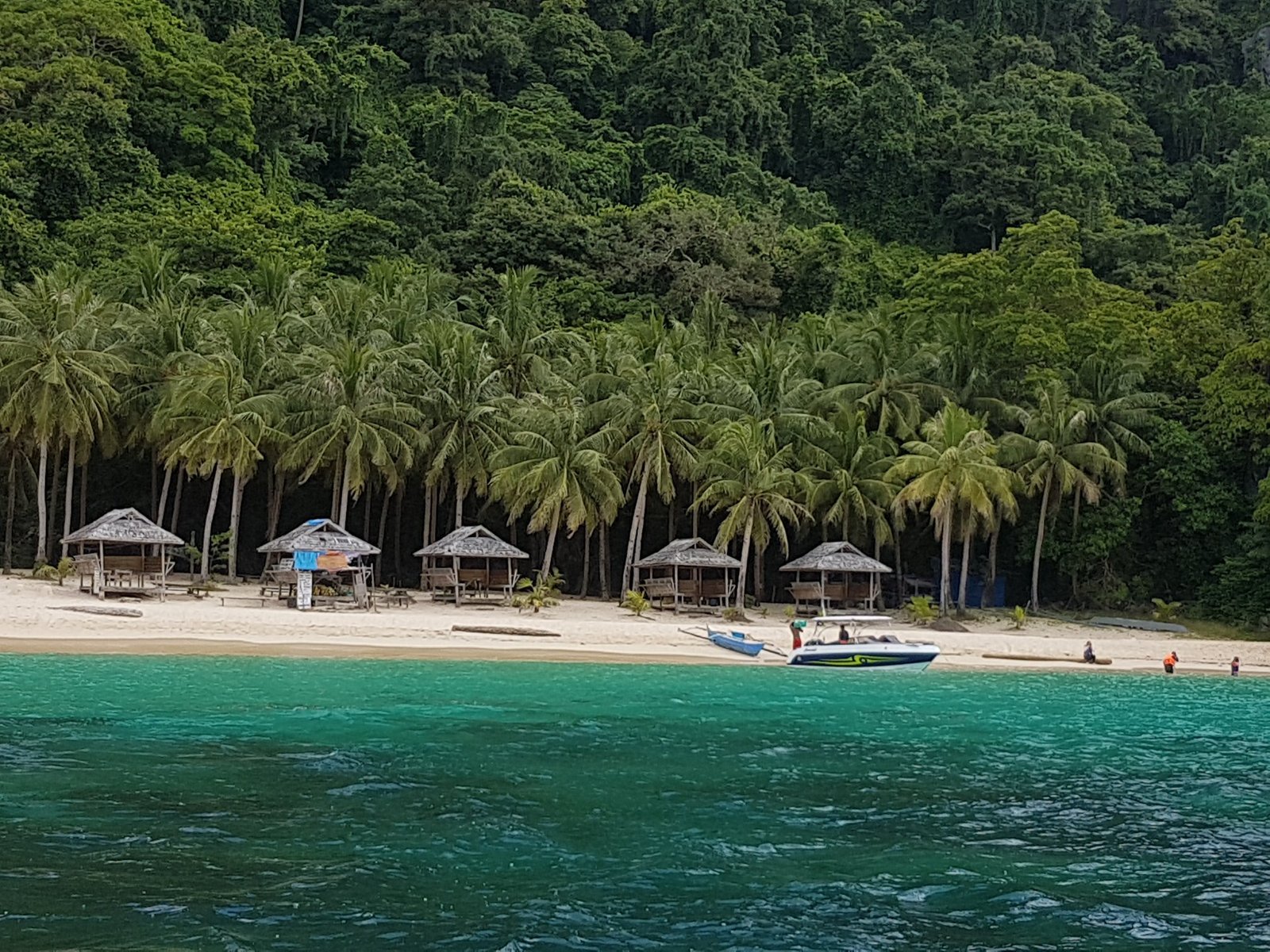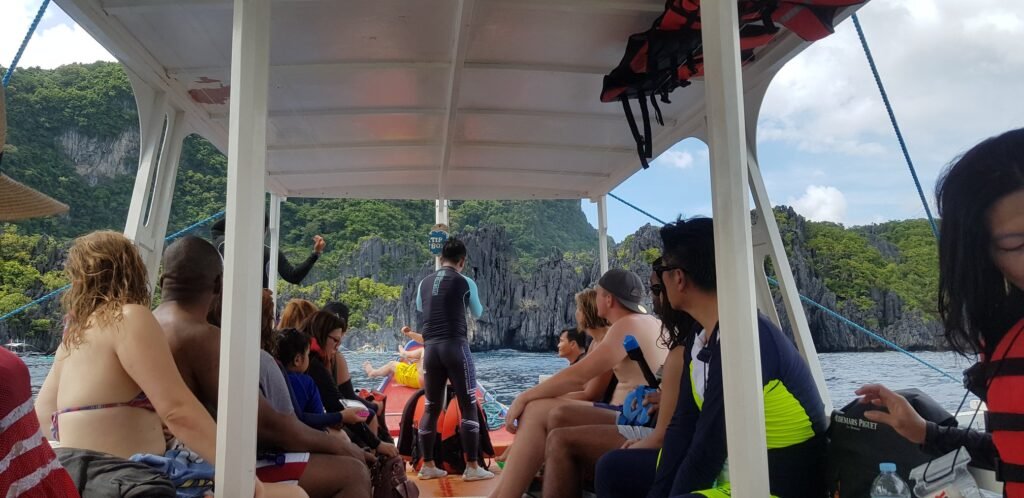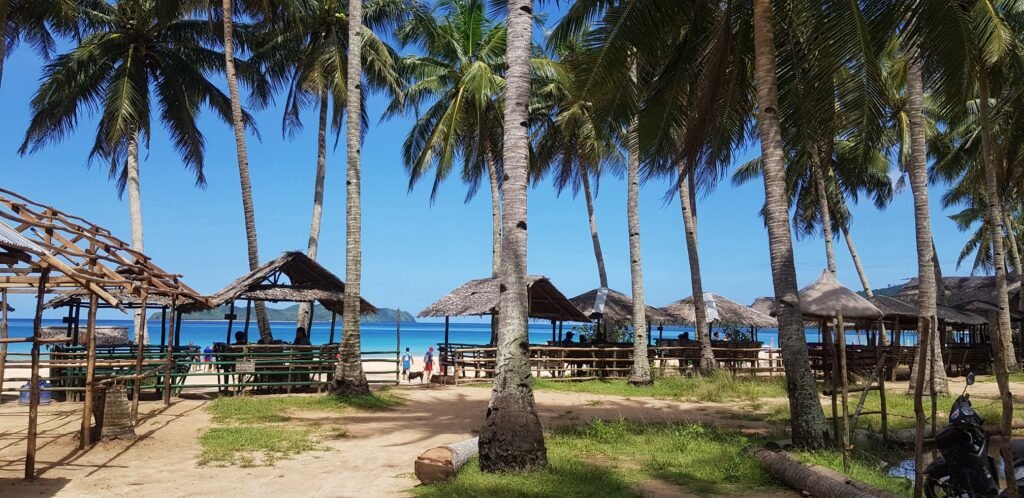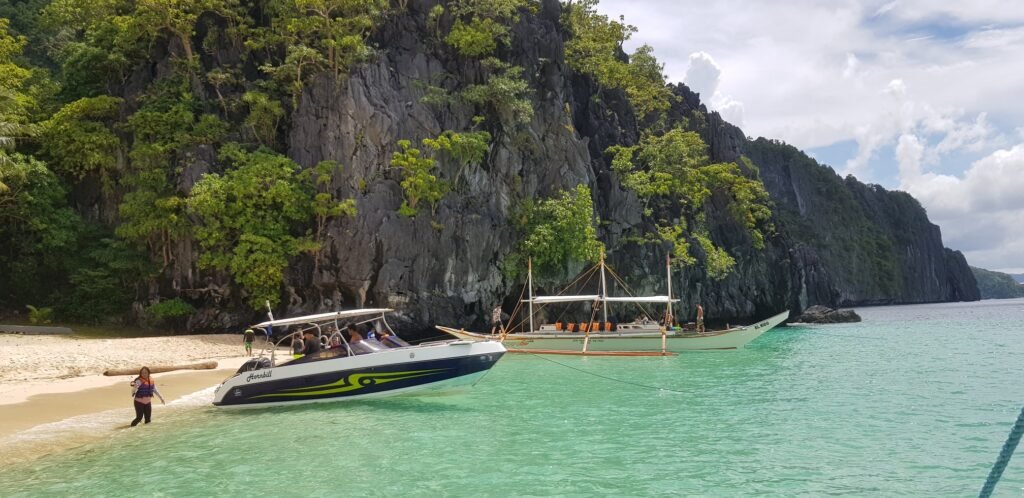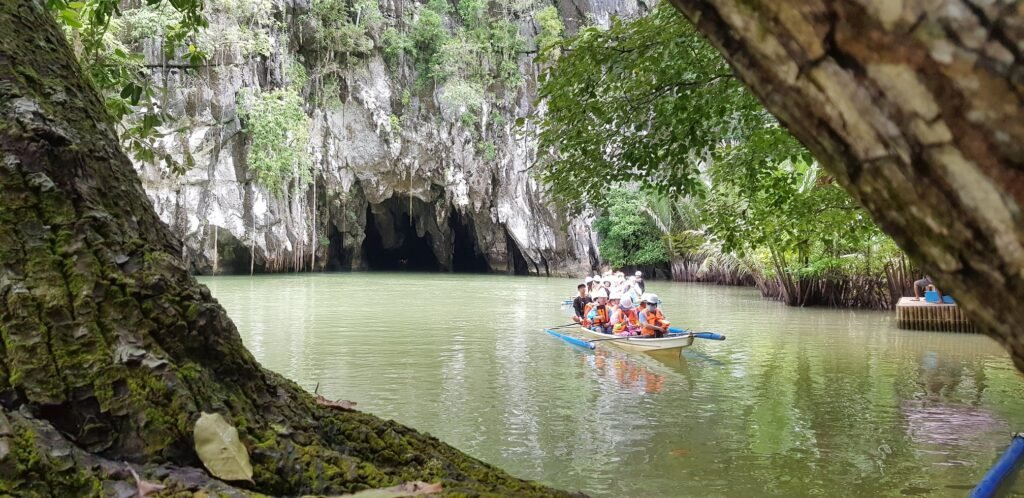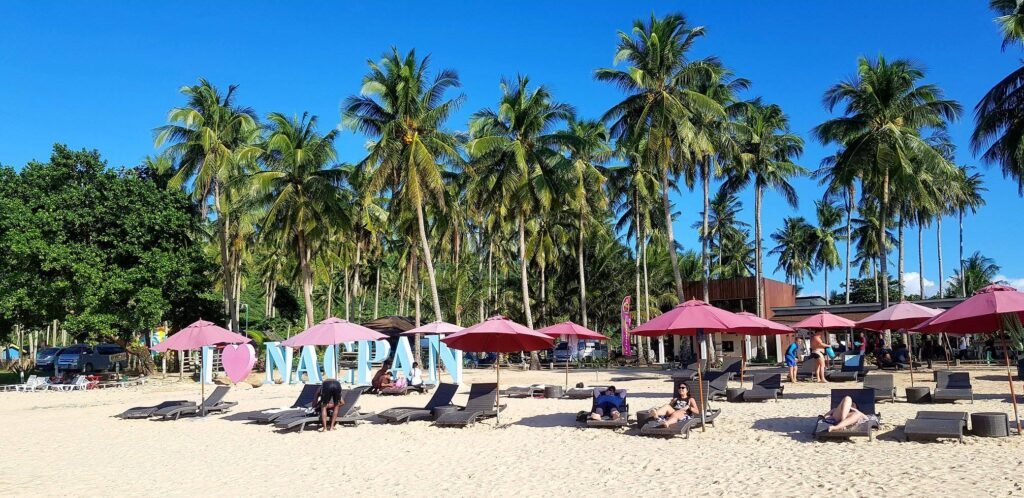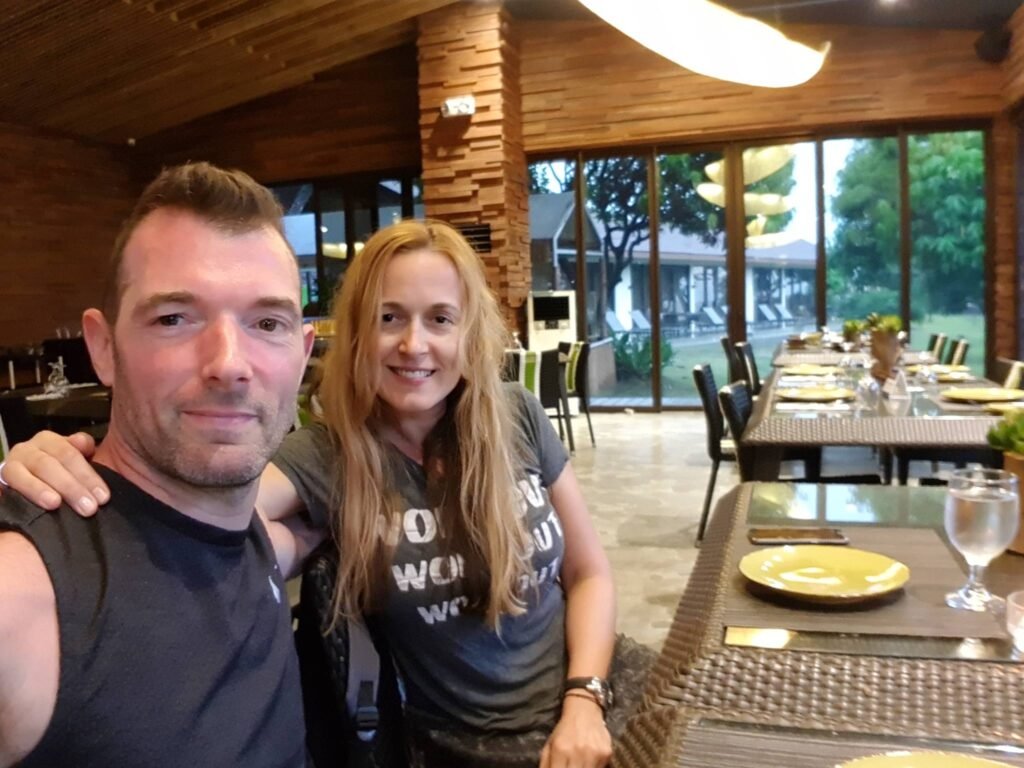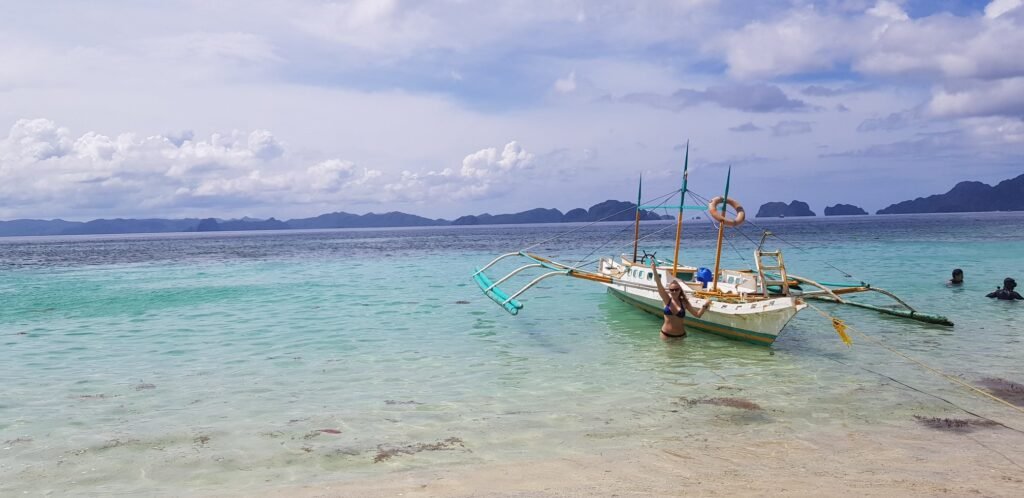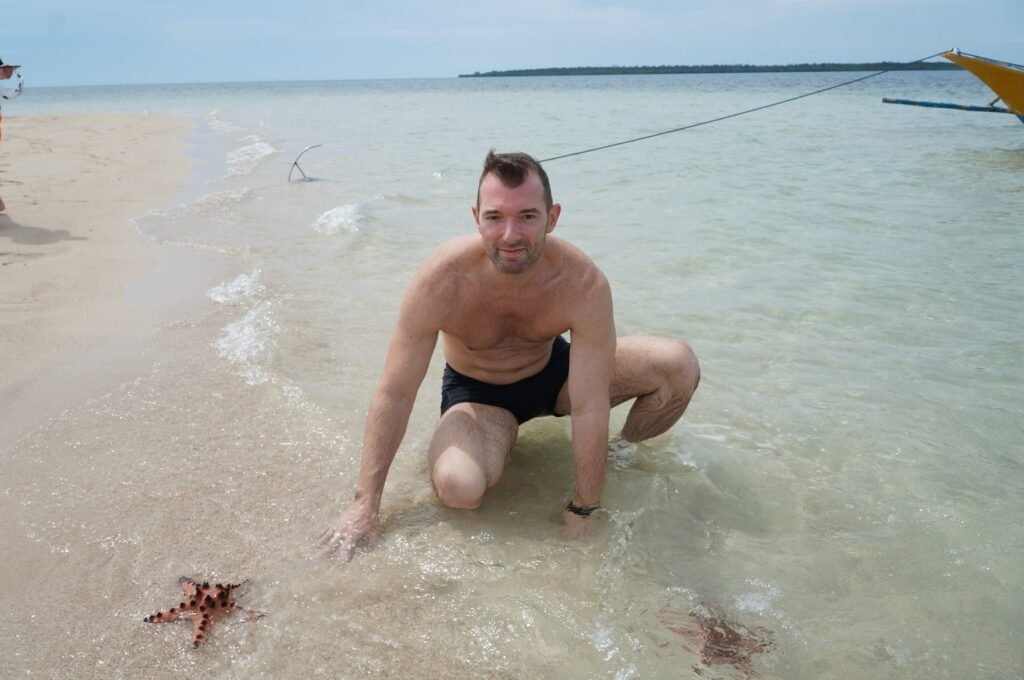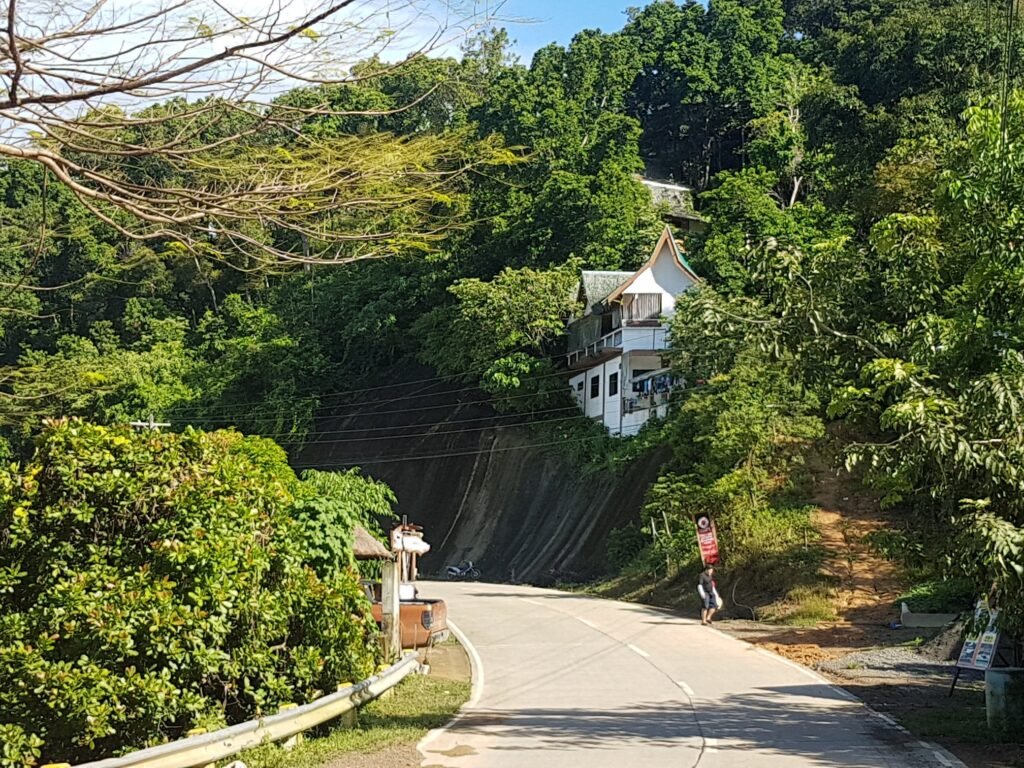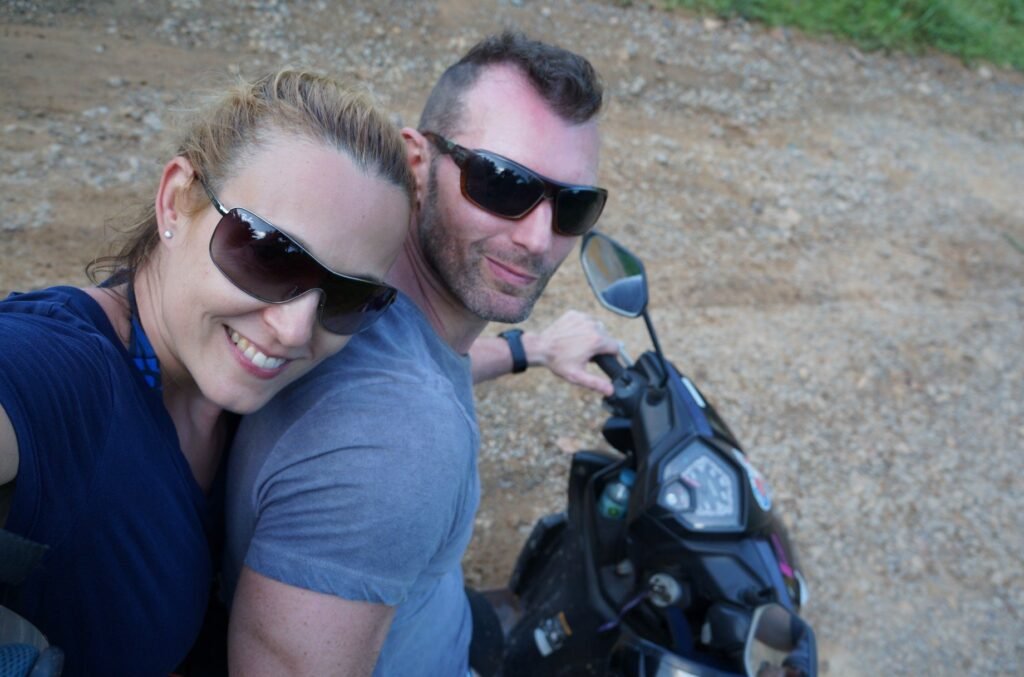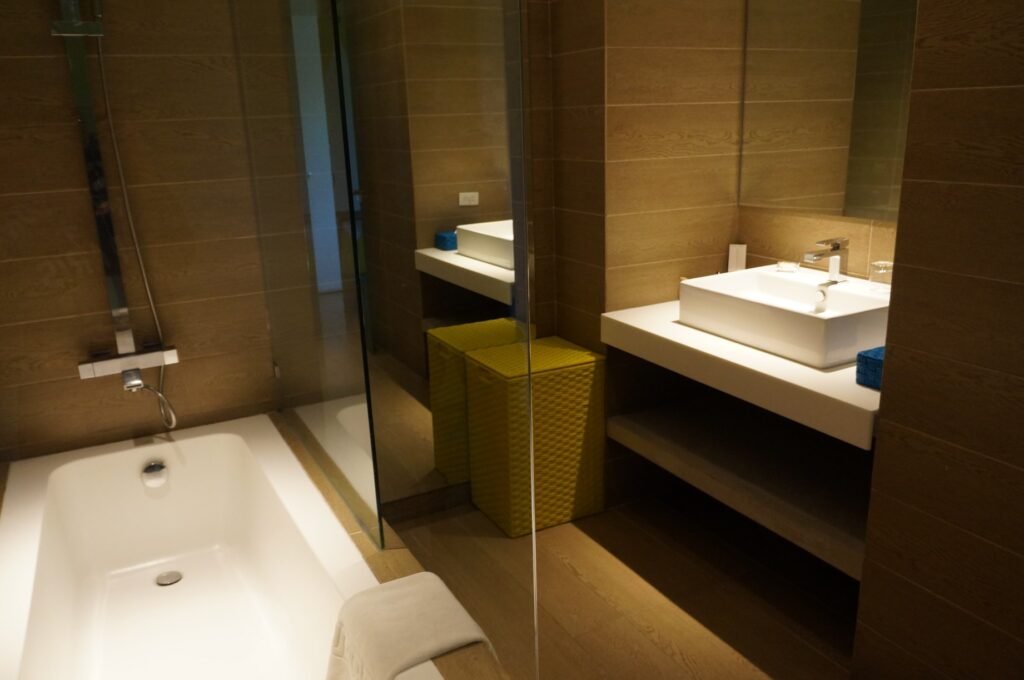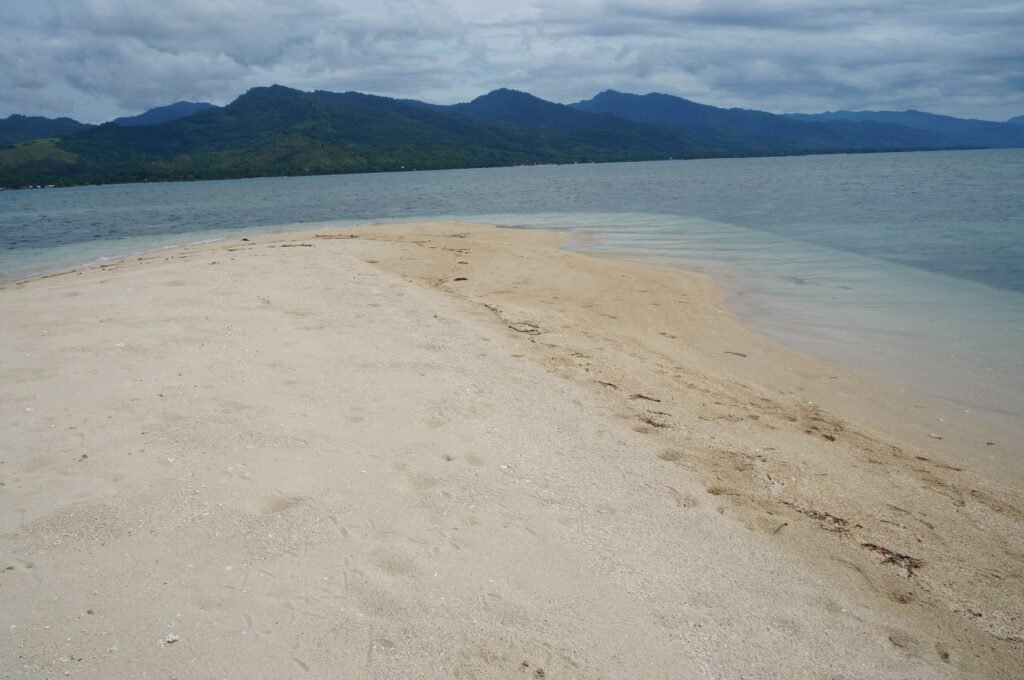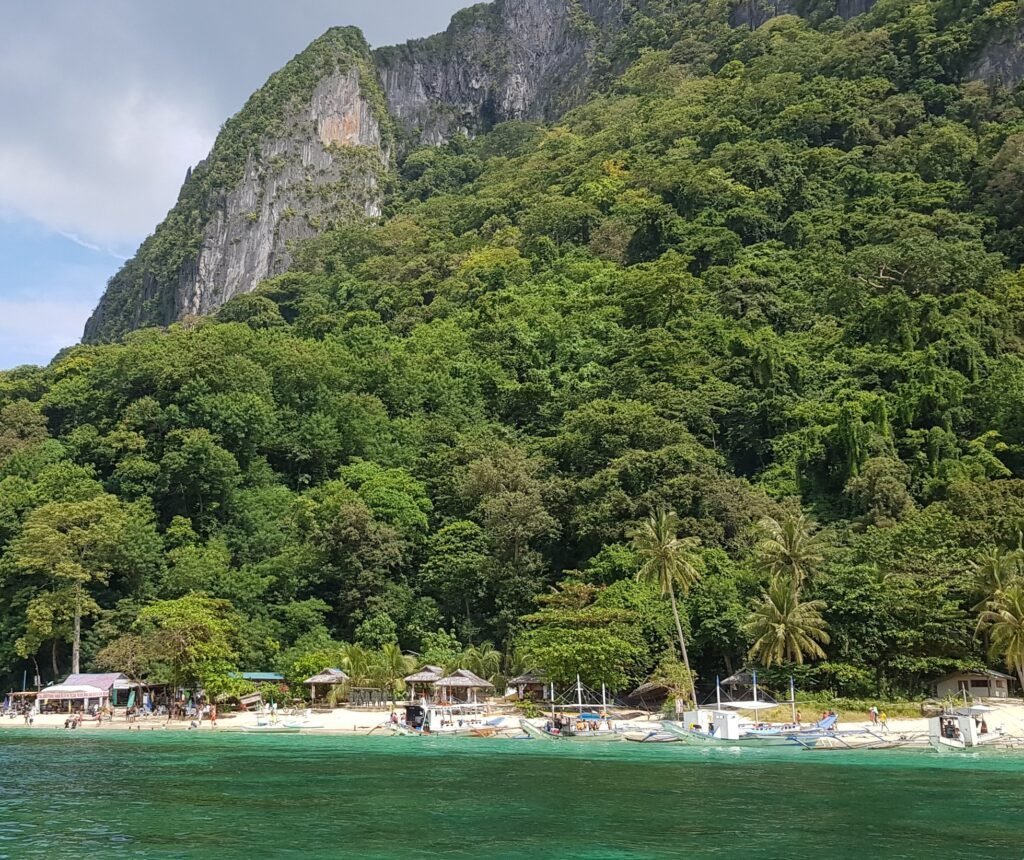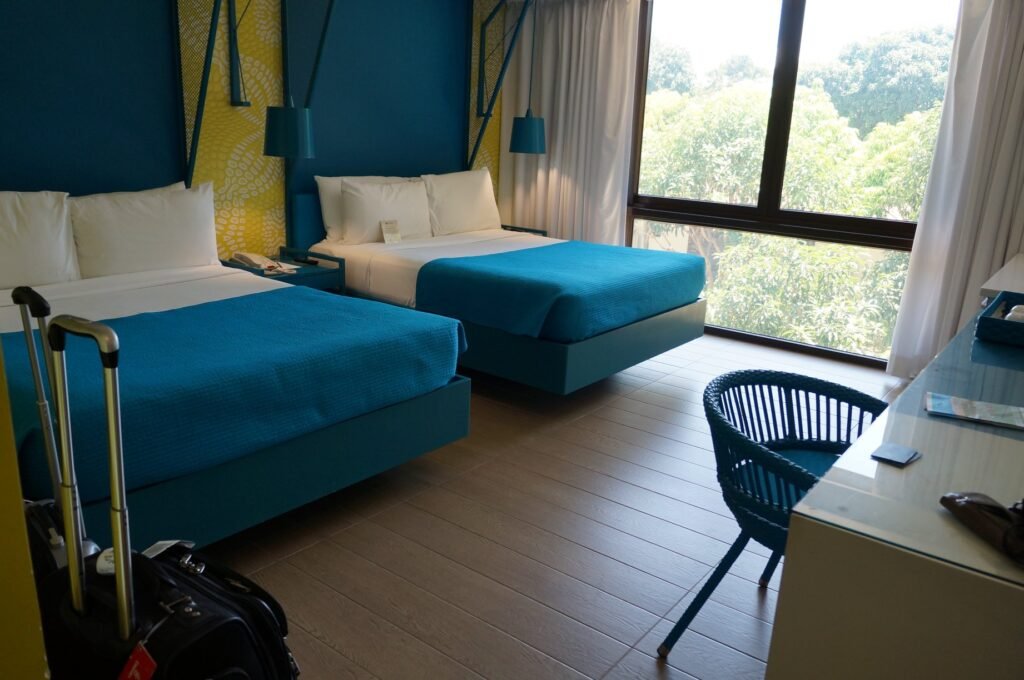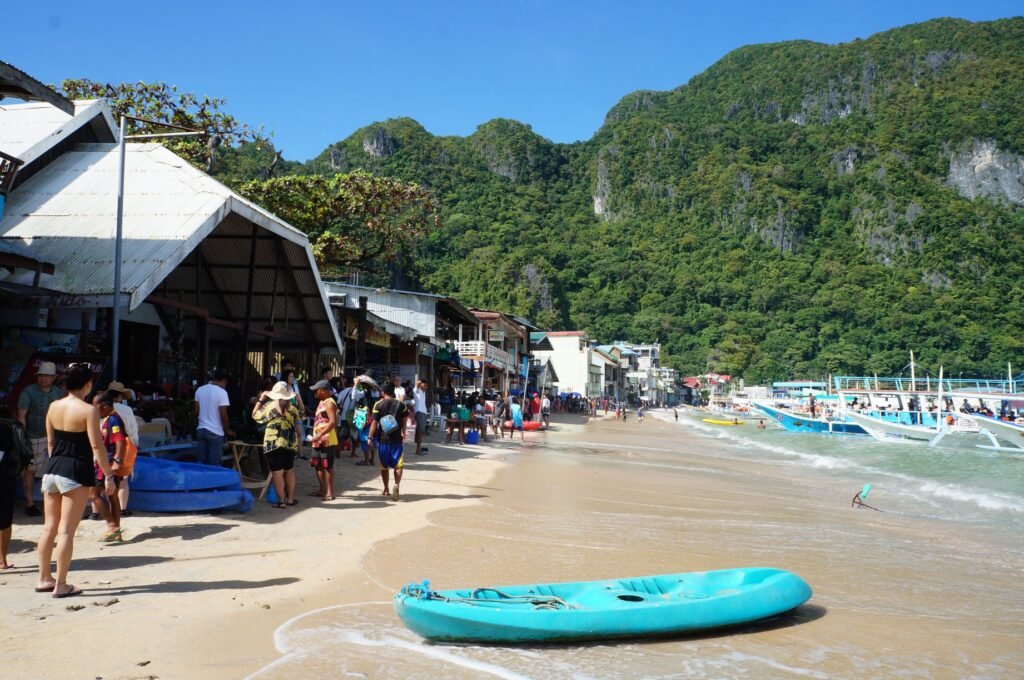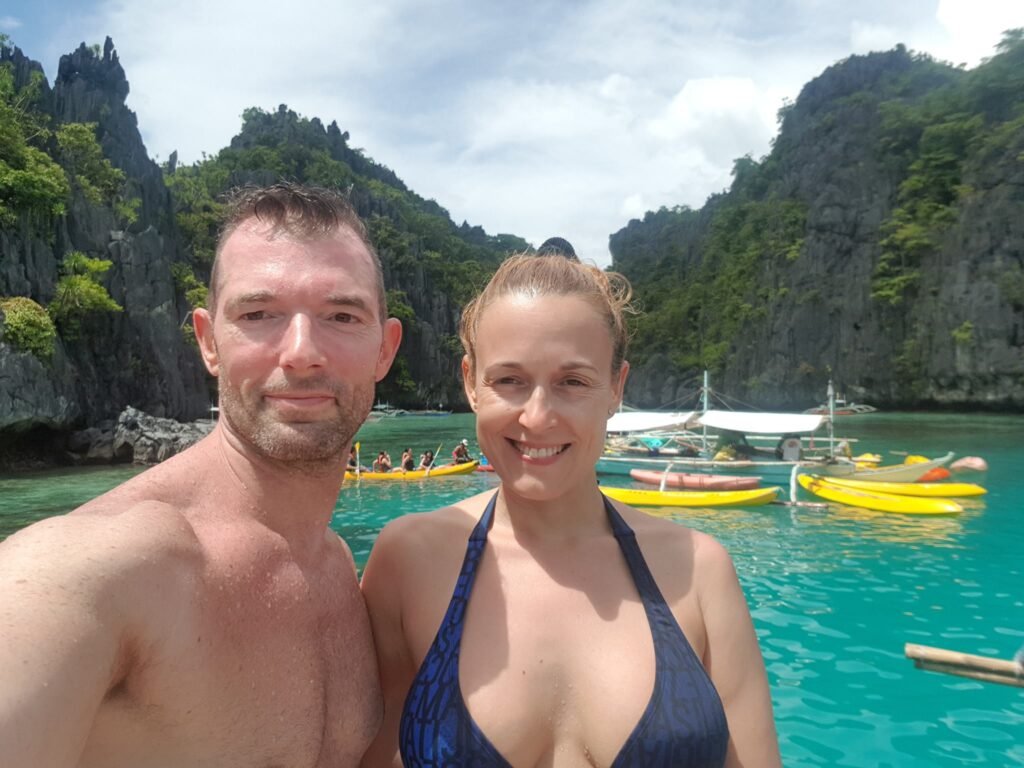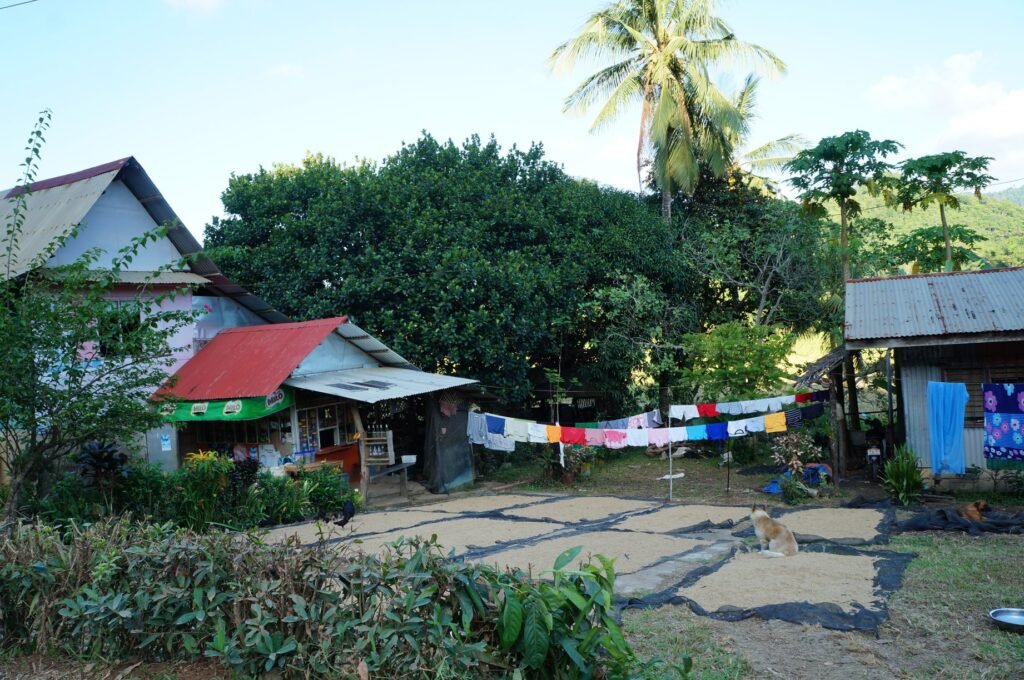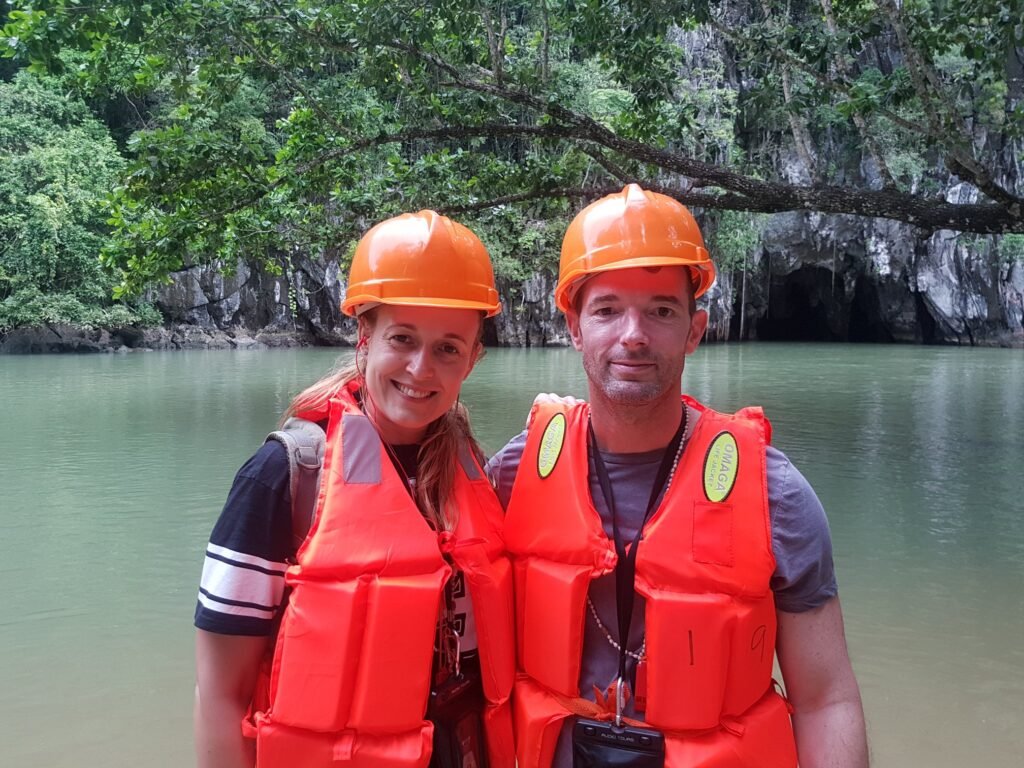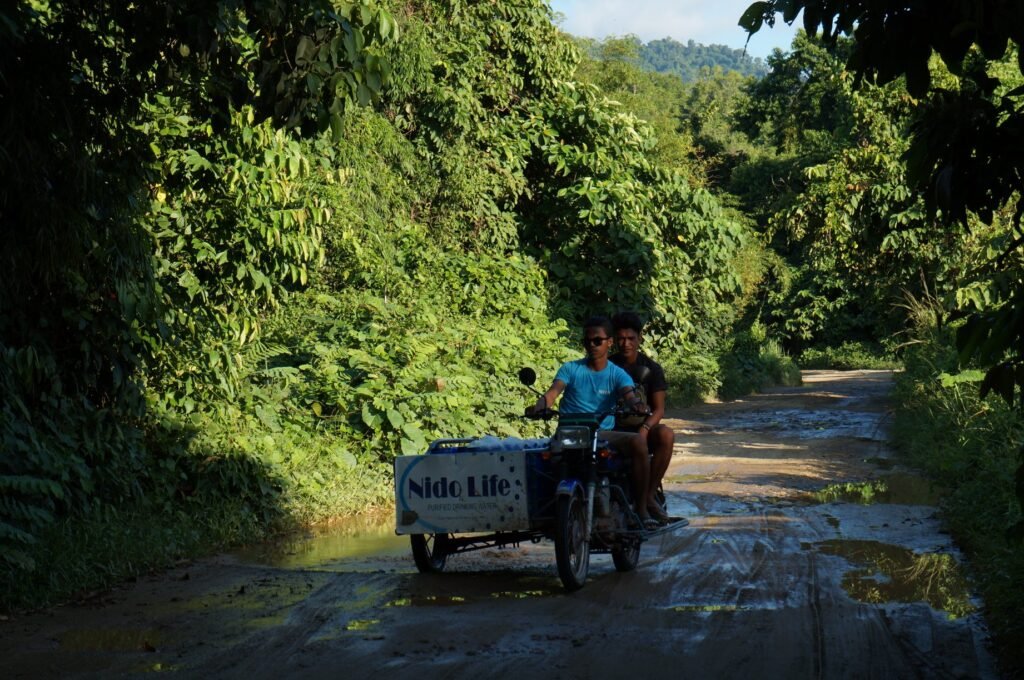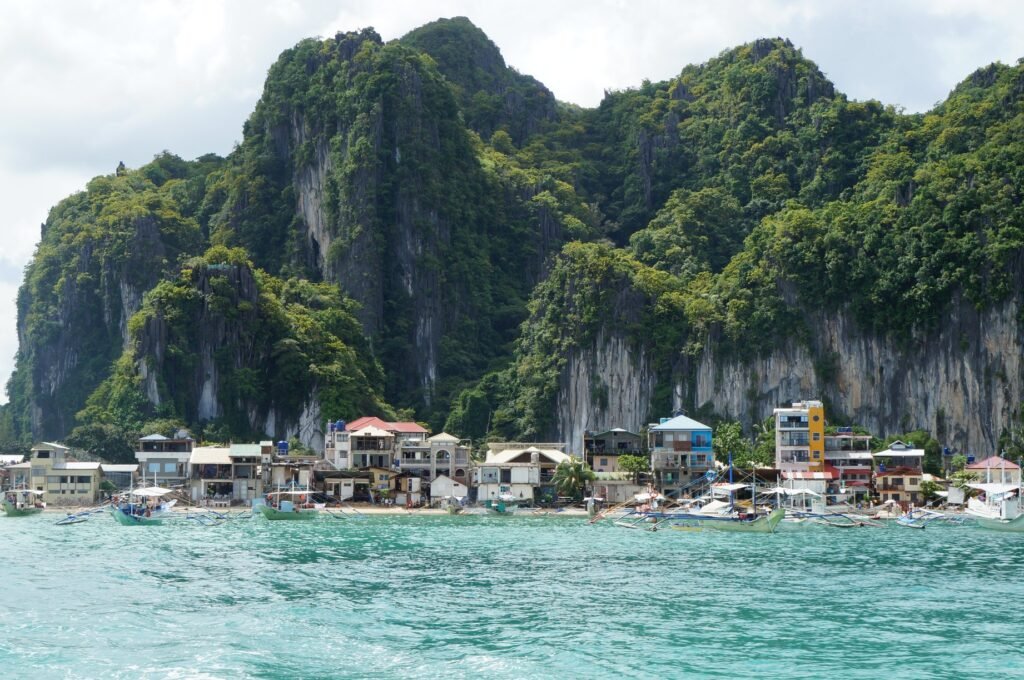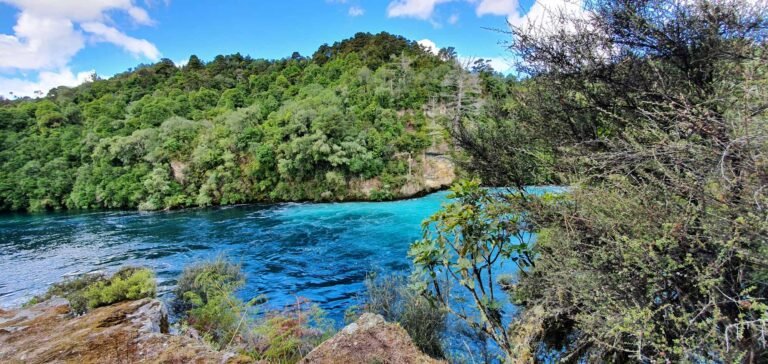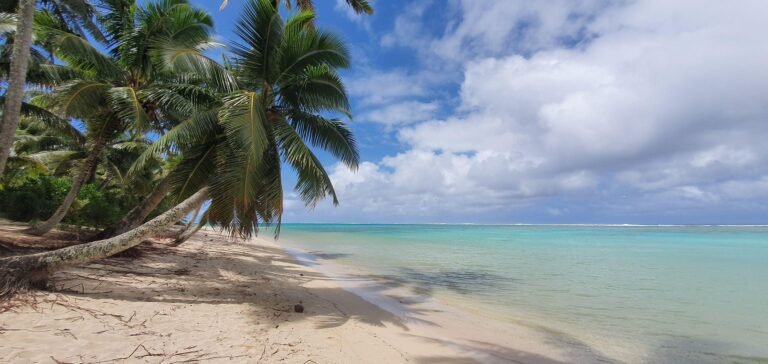Palawan is the chosen island by the characters of the series La Casa de Papel to take refuge as fugitives after the robbery. Now we understand why: it’s a truly incredible destination, its landscapes, lagoons and coasts will remain in your retina forever. Its beaches compete with the beauty of the Thai islands with the advantage that there are fewer tourists. On the other hand, the prices are more reasonable, which reinforces the convenience of choosing the Philippines and Palawan as vacation destiny. There are many attractions in the Philippines in distant points by boat or plane, so if you have a few days, you need to prioritize what activities and places interest you, it will not be possible to see everything in one trip.
The Philippines are an archipelago of 7,107 islands with a total of 300,000 km² of land. The largest is Luzon, followed by Mindanao. With a volcanic origin, mostly mountainous, they are part of the Pacific Ring of Fire. The highest point in the country is the peak of Mount Apo in Mindanao. In the Philippines, there are many active volcanoes, the most recent eruption was in Pinatubo at Luzon in 1991. Mount Mayon is another of the active volcanoes, with the most perfectly formed cone in the world. Mayon has a violent history of 47 eruptions since 1616 and another eruption is feared soon. The Taal, also located in Luzon, is another of the active volcanoes. The islands have narrow shores and fast currents of water so be careful when you go swimming, do not go too far from the shores. Most of the islands used to be covered by rainforest. However, illegal logging has reduced forest cover to less than 10% of the total area.
SITUATION IN THE PHILIPPINES
A quarter of the population is below the poverty line, there is a lot of corruption and the average standard of living is low. The services sector represents 60% of GDP. Agriculture is also important, 37% of the active population works in this branch of activities. Typical products are rice, corn, cassava, sweet potato, copra (dried coconut pulp), sugar cane, tobacco, banana, orange, mango, pineapple and papaya. Wood and cane are also exploited commercially. Likewise, sea fishing is a relevant activity. Anchovies, tuna, squid, shrimp and crab are fished, the sponges are also extracted and marketed.
Domestic consumption is favored by the sending of money from Filipinos who work in other countries (which represents 10% of GDP). According to the constitution, land and water are in the public domain, all natural resources are owned by the State and only Filipino citizens or organizations controlled by Filipino citizens can exploit them. The agreement signed in 1948 extended these exploitation rights (for a limited period) to United States citizens who contributed substantially to the Philippine economy. The low salaries of the population, which do not usually exceed € 200 per month, have led to the establishment of a large number of call centers in the last 10 years, serving the vast majority of English-speaking countries, especially the United States, competing with India as the leader of this sector.
CULTURE
It was a Spanish colony, which explains Catholicism and the architectural style of Manila. The city was repeatedly bombarded by Japanese and Americans in wars and rocked by natural disasters. With the arrival of the Americans, English was institutionalized as the official language. Originally the local community was divided into 79 indigenous ethnic groups. With the arrival of immigrants from China, India, the United States, Spain, Indonesia and Malaysia, many of them married Filipinos, generating an important ethnic and cultural fusion.
Filipinos generally adapt very well to other countries and cultures. They like music, dances and singing groups. Christmas is one of the most important celebrations, it is celebrated with knitted clothes and tables with banquets and fruits. Filipinos are experts in sports, the traditional sport of the country is called Arnis -which is a form of martial arts- although they also enjoy watching basketball, soccer or boxing matches. Family is very important in Philippine culture and it also includes uncles, grandparents, cousins, godparents, and close friends. The children have several godparents and when the parents are not there it’s the grandparents who take care of the little ones. It’s common for families to work together in the same company. Only 10% of Filipinos (a minority of tribal groups) maintain their traditional culture, the majority of the population is more or less culturally westernized. Among the ethnic clans, the Badjao, nomads of the sea who live from fishing, and the Kalinga headhunting warriors (known in that way for the beheading of their enemies) stand out. The Sulú islands have a Muslim population and are home to Islamic extremist groups (The Abu Sayyaf group in the Philippines belongs to the self-called Islamic State and has already carried out several suicide attacks).
TYPICAL FOODS
The food is mainly based on rice, everything is eaten with rice, along with meat, fish and all kinds of tropical fruits. In the Philippines, we can taste a good number of exotic fusion food dishes thanks to the influence of Malaysia, Spain and China. We mention some traditional dishes to try on your next trip: Halo Halo (sweet beans, caramelized banana, chickpeas, sweet potatoes, coconut pieces and rice)/ Yuca Cake (such as a cassava cake)/ Ube ice-cream (a kind of purple tuber)/ Bibingka (coconut cake)/ Flan (it is made with condensed milk) / Fruits: Mango, Pineapple, Papaya, Star Fruit and Durian (it is said that this fruit is an aphrodisiac)/ Fish and typical seafood that are exported: anchovies, tuna, squid, shrimp and crabs/ The consumption of pig is also very common/ Pancit Palabraok (rice noodles with breaded seafood, vegetables and meat)/ Pork Sinigang (stew with tamarind, pork and vegetables)/ Kare-Kare (oxtail stew with peanut butter)/ Ginataang Isda Kalabasa (coconut milk soup with fish, bell peppers and onion)/ Pancit Bihon (thin rice noodles with vegetables, shredded pork or chicken, in soy sauce)/ Pork Adobo (pork with adobo, which has coconut oil, soy sauce, sugar and a touch of vinegar)/ Filipino Chicken Macaroni Soups (chicken, pasta and evaporated milk)/ Fried patties with cabbage, chicken, egg and minced meat/ Longanissa (sweet and sour chorizo)/ Aubergines with roasted eggs/ Drinks: Sour squid whiskey (it is a typical Filipino fruit)/ Beers: Red Horse or San Miguel (there is an apple flavored version).
ACTIVITIES OF INTEREST
If you travel for a few days like us this time, El Nido , Palawan is an excellent option, especially to take advantage of excursions to nearby islands that are paradisiacal. At night the central street of El Nido becomes pedestrianized and is ideal for going to dinner and having a few drinks.
– El Nido Beaches: Nacpan, Twin Beach, Las Cabañas Beach and Marimegmeg Beach are the main ones.
– Excursion to Seven Commandos Beach, Secret Lagoon, Big and Small Lagoon, Hidden Beach, Helicopter Island, Entalula and Snake Island. You cannot miss these excursions, the places are incredible. It’s ideal if you can coordinate a private tour with your own route. It’s also incredible to walk with kayaks through the lagoons, you can hire them right there.
– Undergrown river: Excursion in a small boat inside caves full of bats, the river is 8 km long and is considered a World Heritage Site by UNESCO. It’s an interesting experience but the bats can defecate over you so is better that you don’t speak while you look at them.
– Firefly Watching: The tour starts at 6:00 p.m., you sail through the mangroves, eat in a floating restaurant and you can spot fireflies.
– Iwahig Prison and Penal Farm: In this jail they sell handicrafts, there are animals and the prisoners are out. If you feel curious about prisons, it’s an interesting option.
– Batak Tribe Village: It’s a local indigenous tribe, if you visit them you will see how they play their music, they will show you how they climb trees to extract honey and how they hunt, they are located one hour away from Pto Princesa.
– Salakot Waterfalls: They are beautiful waterfalls of green water to visit if you are staying in Puerto Princesa.
– Dos Palmas Island Resort: It’s a good excursion to go from 7 am to 6 pm. The island is in front of Palawan, has starfish and you will arrive after an hour by boat from Bahia Honda.
OTHER ACTRACTIONS BY THE PHILIPPINES
Manila is dangerous, there is extreme poverty, prostitution and crime, so we decided to avoid it, but it has attractions like the Manila Ocean Park, museums, theaters, nightclubs and bars. In our opinion, that we value nature tourism more than tourism in cities, we would prioritize seeing volcanoes, rice terraces, waterfalls and hills.
– Mount Pinatubo volcano and Taal volcano: The excursions are long and demanding. The Pinatubo Volcano is 120 km from Manila and the Taal 80 km.
– Rice terraces of Banaue: They are 400 km from Manila, they are worthy of a postcard.
– Tapiya Falls: They are near the Banaue terraces.
– Also on Luzón Island (the same island where Manila is) there are indigenous villages of Aetas. It is possible to spend a few nights in one of their villages and share with them their beliefs and ways of living. They are friendly and welcoming, living in the mountains of Luzon, and have characteristic curly hair, dark skin, and short stature.
– Chocolate Hills on Bohol Island: There are 1268 very beautiful symmetrical mountains.
– Bohol Island: Also there you can meet the gremlins -the Philippine tarsiers-
– Coron Island: The views of this island are amazing and it’s less crowded than the El Nido area. On a multi-day trip, Corón is worth betting on. Once there, you can visit Lake Kayangan, Twin Lagoon and climb Mount Tapyas.
– Siargao Island: The island of palms is the best place for surfing.
– Island Boracay: White Beach is the best of its beaches, followed by Diniwid, Ilig-Iligan and Puka Shell. The government closed the island for six months due to contamination, the hotels dumped wastewater into the ocean. Currently, the environmental balance is supposedly already recovered after the measures taken.
– Donsol: Swimming with whale sharks is another interesting alternative activity if you dare. These animals eat plankton, so don’t worry, they won’t see you as a good snack.
– Mayon Volcano, in the Province of Albay: It is an active volcano so you have to check its status before hiking to climb it. In 2018 it erupted and many people died.
– Diving in Fisherman’s Island with turtles, and if you are lucky, with whale sharks. There may also be hammerhead sharks that are dangerous, they normally eat fish, octopuses and others but they can attack you if they feel threatened.
– Snorkel in Tubbataha, where you will be able to find thousands of fish, rays, turtles and sharks. The journey there from Puerto Princesa is a bit long.
– Camiguin Island: On this island you can visit the Hibok-Hibok volcano.
BIODIVERSITY
The Philippines is among the 17 most biodiverse countries on the planet. Gremlins are Filipinos… hee… hee… Steven Spielberg didn’t invent these creatures. If you go to the island of Cebu; you will find the Filipino tarsiers, surprising little animals with bulging eyes and a tiny body that wander among the vegetation. The Furbys are also inspired by this primate, they are lovers of freedom and even commit suicide when captured.
The forests have Philippine mahogany, palm trees, ferns, coconut trees, bamboos, conifers, eucalyptus, cinnamon, trees from which rubber is extracted, fig trees and orchids. The country is home to a large number of reptiles (such as pythons and cobras) so watch where you walk. There are domesticated water buffalo (called carabao), various species of deer, wild and domesticated warthogs, mongooses (they are meerkat-like carnivores, they hunt poisonous snakes), and Philippine skunks. There are also some 760 species of birds, including multi-coloured parrots. In turn, they have a large number of marine fauna in coastal waters, particularly molluscs. Pearl oysters abound in the Sulú archipelago, in the extreme southwest, their pearls are very famous.
We make an interesting clarification about the mongoose: it’s a very sociable little animal, it lives in burrows in groups of between 10 and 50 individuals. Each member of the group has to cooperate to survive, they need to work together to protect the youngest and the oldest. In Asia they realized that it can vigorously fight poisonous snakes and learn some simple tricks, so they took advantage of this condition to mount mongoose-cobra combat shows. As this animal is agile, with thick fur and immune to snake venom, it does not suffer lethal damage.
NOTES
– In the Philippines there are twelve hours of sunshine a day (from 6 to 18) throughout the year.
– Do not drink running water, try always to drink bottled water. Although many locals take it, your body may not be prepared.
– Take all precautions to protect you, your family and your personal belongings in the city of Manila. Thefts are frequent.
– Filipinos are very friendly and smiling, in the native Filipino neighborhoods they look at you a lot for being different.
– Filipinos dress as in the West, except in typical dances that have very colorful tribal costumes.
– In the Philippines, they eat with their hands and do not stack plates or pass food from one plate to the other because they believe it takes away fortune.
– If you like food in a restaurant, you can say “ma sarap”, delicious in Filipino.
| Capital | Manila |
| Vaccines | – Yellow fever (you must take it if you come from or travel from an endemic country) – The following vaccines are recommended: Tetanus/ Triple viral (Measles, Rubella, Mumps)/ Hepatitis A/ Typhoid fever/ Japanese encephalitis/ Cholera/ Rabies/ Flu/ Pneumococcal. – There is a risk of malaria, dengue and Chikungunya fever. You have to protect yourself against mosquitoes and go to the doctor at the slightest symptom of fever |
| Time | Check the time in the Philippines in World Time Server. |
| Exchange | Check USD/ PHP exchange in The Money Converter. |
| Language | English is the official language but Filipino is also spoken (known also as Tagalog). In the Philippines, there are an estimated 175 languages currently spoken, almost all of which are classified as Malay-Polynesian languages. In turn, there are about eighty active dialects. Among these languages, there are 13 that are indigenous with almost 1 million speakers. For more than three centuries in the Philippines, Spanish was the official language under the colonial domination of Spain, it was spoken by 60% of the population but after the occupation of the United States, it became English. |
| Currency | Philippine Peso (PHP) |
| Transportation | jeepneys take you everywhere. These fantastic vans painted in bright colors and filled with messages about God and Jesus Christ are military jeeps (from American troops used in World War II that have been recycled into buses). They have capacity for 20 people, they go through towns and cities for 14 cents the way). You can also use buses, vans or rent a motorcycle. |
| Religion | The majority religion is Catholic 83%, introduced by the Spanish missionaries. There is also Protestantism 8%, Islamism 5%, Buddhism, Confucianism, Taoism, Shintoism and Animism, among others. Ni Cristo Church is the independent Christian church bigger in Asia and has adherents also in the Philippines. In Manila, it’s common to find “God loves you” messages posted on skyscrapers. |
| Visa | Europeans do not normally require a visa to enter the country as tourists. The authorized period of stay is 30 days. Check Visa conditions for your country at the local embassy. |
| Airport | Ninoy Aquino International Airport (MNL) Manila/ Puerto Princesa International Airport (PPS) |
| Plugs | A/ B and C (With two circular legs or two parallel rectangular legs). Don’t forget to bring your universal adapter if you don’t have the same plugs in your country. |
| Temperature / Climate | – The maximum temperature is 33 °C and the minimum 22 °C. – There are rains (50% precipitations). – There may be typhoons that tend to cause more damage to the population without resources. The last typhoon in 2017 (Yolanda) caused more than 200 deaths. When there is a typhoon (winds of 80 to 120 km per hour), the recommendation is to leave the coastal areas and move away from the banks of the rivers because you can be swept away by them. |

